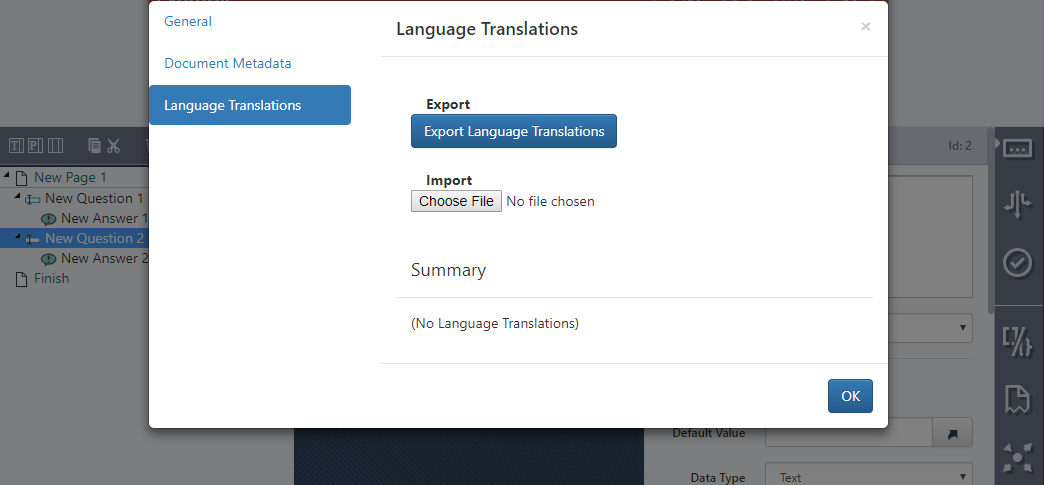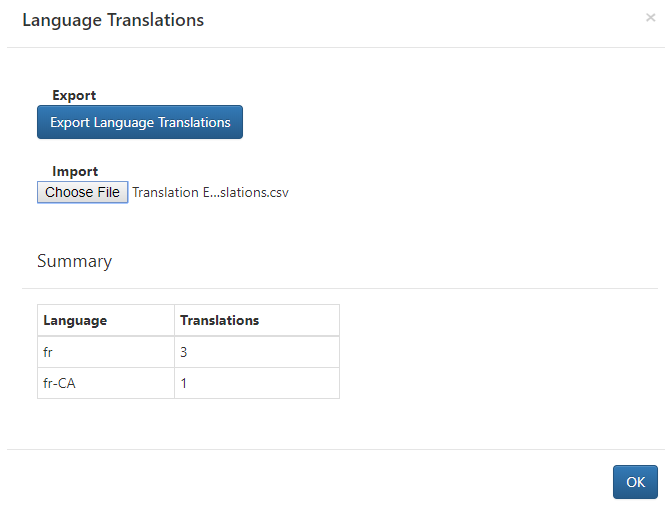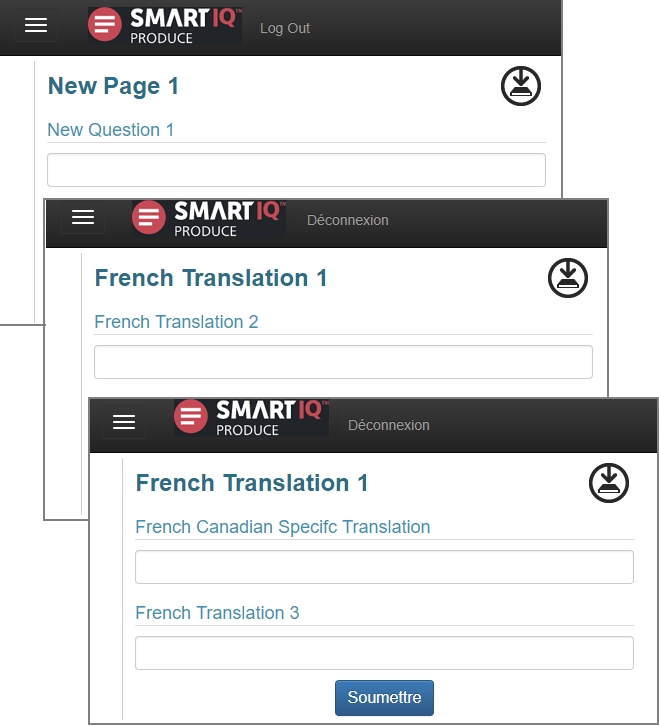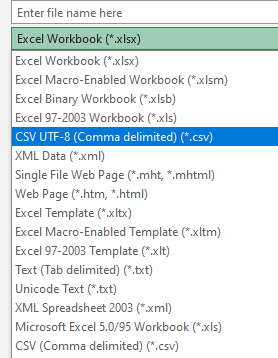Form Translations
Translations for all the text displayed within a form (form title, page names, question text etc.) can be uploaded allowing the form can be presented in the user’s preferred language and culture. Languages are controlled via the user’s profile or overwritten by the passing a value on the query string (e.g. ?lang=es-ES).
SmartIQ does not automatically translate the text configured in Design, translations must be provided by the form Designer.
Depending on what translations have been provided SmartIQ will prioritize terms targeted at the users specific culture, then their generic language and lastly the default provided in Design. For example a French Canadian user would receive as a priority any French Canadian specific terms then then generic French and lastly an English default.
How to Configure Translations
Open an appropriate project in Design. Click the properties icon and navigate to Language Translations.

Click the Export Language Translation Button. SmartIQ will generate a CSV file for download providing all the terms available for translation, some descriptions of their nature in the form the default terms and any existing translations that have been provided. The file can be edited in any text editor or excel.
To provide translations provide a column for each language or culture you want as in the example below.

With the translation file completed return to Design and use the Import button to upload the saved file. A summary will display for each language provided in the file.

Save the project in Design and run the form in Produce, change your user's Profile or use the query string parameter to change the form's language e.g. ?lang=fr-CA.
When selecting the language in the user profile, the corresponding ISO Alpha-2 code should be used in the column heading for the desired translation. For example, if French is chosen in the User Profile, use 'fr' in the column heading.

Troubleshooting Form Translation files
If you find a new or edited translation file is not correctly rendering language symbols eg: letters with acutes or accents are appearing like à instead of à, then the issue is the encoding the csv file has been saved in.
You will need to download the translation file and edit it to correct the incorrect symbols then ensure the file is saved as CSV UTF-8.
If CSV UTF-8 is not an option in the save dialog for your version of Excel, google how to save/export CSV in UTF-8 format for your version.

Updated 8 months ago
